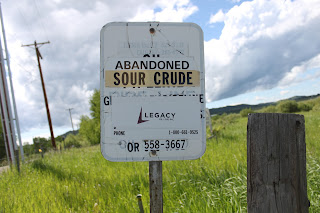China Water Crisis Price of Progress
China’s great leap forward that started in the 1990s has
exacted a heavy price on the environment and small farmers. Slack environmental
protection laws have allowed the factory owners to dump toxic waste directly into
waterways, polluting them in some cases to the point where it is dangerous to
touch the water.
In addition to widespread pollution of waterways and ground
water, industry sucks up vast amounts of water in the manufacturing process.
Much of China runs on coal power, a resource in abundance particularly in the
north part of the country which also is amongst the driest of the territory.
Coal uses about 17% of China’s available water, but much comes from already dry
areas. Some of these areas are as dry as the Middle East. Water used for
industry becomes unavailable for growing food.
While the central government is aware of the looming crisis,
many urban dwellers are going about their daily business in blissful ignorance
of the looming crisis. If water is restricted to industry then people are
thrown out of work and civil unrest is likely to occur. If farmers lose their
water sources they won’t be able to grow sufficient food for the billions of
mouths and civil unrest is likely to occur.
In an attempt to make denizens of Beijing more aware of the
problem and advertising firm has placed large reflective installations around
public spaces in the city in to engage the people in a creative way. A
spokesperson for the firm, Grey Group, stated that many people who live within
Beijing have never seen a river or a lake.
The water crisis is rapidly getting worse. Twenty years ago
while travelling in the PRC, one of the most lasting memories I have of the
countryside is rivers full and brawny and agricultural areas lush with water in
ditches and small boys herding ducks. Since then the Province of Hubei has lost
974 of its 1000 lakes. An estimated 28 000 rivers country wide have been sucked
dry by overuse. Most that remain are compromised.
China has embarked on the ambitious and expensive South to
North Water Diversion Project that will eventually divert water from the mighty
Yangtze River to supply the northern taps. This will be the biggest water
diversion project in the world, yet even the Yangtze is losing its volume.
Since Deng Xiaopeng declared, “Let a few get rich.” Society
in China has changed radically, including riches for many. Those running the
country have some difficult choices to make in the near future with civil
unrest a likely outcome no matter which path they choose.
The official line in the PRC is that the water shortages are
a result of climate change but other important factors are also at play.
·
Increasing population, currently more than 1.349
billion people
·
Deforestation
·
Industrialization
·
Pollution which effectively prevents usage for
drinking or agriculture
There may already be moves afoot to curb water usage by
China’s industries. Today Bloomberg News is carrying a report that 1400
companies in 19 different industries have been ordered to cut production. The
official reason is given as there is overproduction and that will force prices
down. The side benefit will also be reduced production equals reduced water
consumption.

Comments
Post a Comment